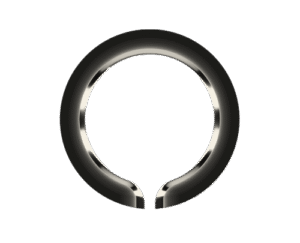- VISION
- - INSIGHT
- - ACTION
NATURE'S ACTION CHEMISTRY
“Prof. Sabyasachi Sarkar (born May 17, 1947, in Birbhum, West Bengal, India) is a chemist known for his work in bioinorganic chemistry and nanoscience. He studied at Ramakrishna Mission Vidyamandira and the University of Calcutta, then earned his Ph.D. from Gorakhpur University. After postdoctoral research in Germany, he joined IIT Kanpur in 1978. There, he worked as a Senior Professor and later became the Head of the Chemistry Department. Prof. Sarkar’s research has helped us understand metalloproteins better. He worked on models of heat-resistant enzymes and fish enzyme replicas. He also proved that carbon dioxide binds to magnesium in chlorophyll during photosynthesis, confirming a 100-year-old theory. In nanoscience, he developed water-soluble nanocarbons from low-grade coal. These have been used in plant growth, bio-imaging, and drug delivery across the blood-brain barrier. Beyond IIT Kanpur, he has held honorary positions at IIEST Shibpur and Ramakrishna Mission Vidyamandira. He became a Fellow of the Indian Academy of Sciences in 1997. Throughout his career, Prof. Sarkar has worked to advance chemical sciences while mentoring and guiding young researchers.”
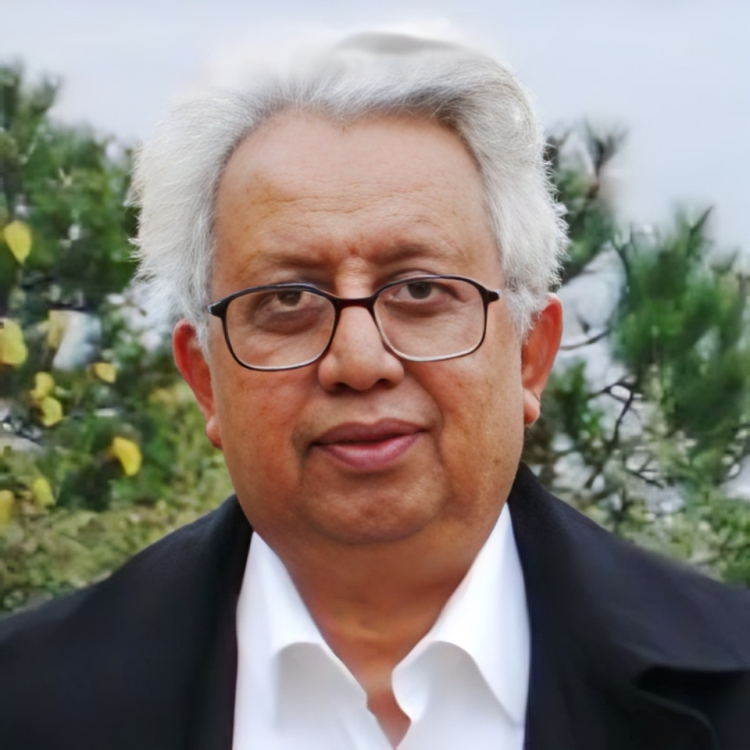
PROF. SABYASACHI SARKAR
IIT KANPUR
“Science, a poetic philosophy in understanding nature”
Thereafter, came my international experience. I was fortunate to work with a German Professor. People used to call him mad, you know. They’d ask me how I could stay with him for so many years. But I knew him very well. Sadly, he passed away last year at his 86. But his dedication, his passion for research, was beyond comprehension. A simple story: at 9:30 at night, he’d be in his office, and I’d be in the lab in Germany. After finishing up for the day, I walked back to my apartment, had a late-night dinner, and tried to unwind with some TV. Back then, I enjoyed watching John Wayne or Clint Eastwood westerns. Suddenly, my doorbell rang, at 1:30 in the night! No mobiles those days. I’d open the door, and there was Professor Achim Mueller standing.
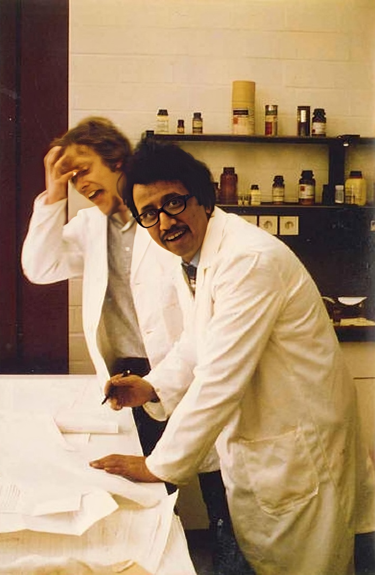
Our first inspiration was nitrogen fixation by nature how plants use their root nodules to carry out this process in the open environment. The enzyme responsible for nitrogen fixation was recently found back then to have molybdenum, iron, and sulfur at its active site. At the time, we were experts in molybdenum-iron-sulfur chemistry, so we jumped at the chance to replicate a similar assembly in a test tube. Immediately others like Americans, British joined in such working model study. Meanwhile, X-ray studies revealed the full structure of these enzymes, including their active sites. However, replicating their function remains a challenge. The active site is too fragile, and in natural holo-proteins, the apo-protein plays a crucial role as a shock absorber during multi-electron transfer. Even today, no one has successfully created a synthetic holo-protein that works like the natural one.
When the X-ray structure of the active site of the hyperthermofile, “Pyrococus furiousus aldehyde ferredoxin oxido reducatase” was reported we were overjoyed to notice that we have synthesized its exact model based on our intuitive chemistry. Today, ‘Hi-Fi’ DNA for laboratory research is used from hyperthermobile of Archean domain which are closer in lineage to Eukaryan domain (human) than bacterial domain. Handling of these DNAs is easy as these are stable at room temperature and do not get de-natured readily as DNA from bacterial sources do. I could model these types of complex molecules. The joy of seeing your designed molecule built atom by atom in the lab function just like nature’s version is unparalleled. That moment, when you realize you’ve replicated nature’s work, is the ultimate reward of witnessing chemistry in action!
If you ask me, why I delved into biomimicking, it is because this field has so many possibilities! Understanding thermodynamics is one aspect and the kinetic mechanism is another. Let me provide you a crazy idea about chlorophyll. Almost everything is known about its role to fix carbon dioxide. But I was checking the frustration of Willstatter (the discoverer of fixing carbon dioxide by chlorophyll). He wanted to show that carbon dioxide does bind to magnesium in chlorophyll but he was unable to prove. It was hundred years ago. I thought, why not replicate this chemistry in a test tube and see if carbon dioxide truly binds to the magnesium center of chlorophyll and if so, understand its advantage? We could create a synthetic porphyrin magnesium complex that binds bicarbonate to Mg center. The editor responded, agreeing that demonstrating carbon dioxide binding to the magnesium center helps explain how the redox chemistry of this porphyrin complex is facilitated to form radicals essential for carbon dioxide fixation. However, it challenged us: how is this relevant in native Mg-chlorophyll? We freshly isolated and chromatographically purified Mg-chlorophyll. In a carbon dioxide environment, we observed a redox potential shift similar to what we had seen in our model Mg-porphyrin complex. To prove the binding of carbon dioxide on the Mg-center, we rigorously subjected our isolated Mg-chlorophyll to C13 NMR. The low abundance 13C isotope in natural carbon dioxide drove us for data acquisition for more than 24 hours. Finally, we smiled as we observed that in native chlorophyll, carbon dioxide indeed binds to the Mg-center. We published the entire study, dedicating our findings to the memory of Willstätter’s discovery.
Today, researchers are engaged to reduce carbon dioxide for value added product. As back in 1992 we demonstrated that tungsten in +4 oxidation state is an avid oxo abstractor that abstract oxygen from carbon dioxide to form formate, a somewhat close to the reaction of the enzyme,” formate dehydrogenase”. But these systems transform one molecule to another, converting a substrate into a product. The question is, can we use these proto-enzymes or synthetic enzymes for important transformations that we need every day? Can we use them to detoxify specific environment? All this could be used for our own purpose. In this way, this system can be a biocatalyst to be developed. These can do it repeatedly, at not much cost, and the pollution aspects would also be better. The potential is vast, we just need to harness it.
NOTES
By this time, I had started loving Nature’s Chemistry in Action. What is it? It’s basically looking at how nature carries out chemistry. Think about when you’re traveling in a crowded bus. Sometimes, you catch the scent of someone’s sweat, and it’s surprisingly sweet. But right next to them, another person’s sweat has a strong, unpleasant odor. I started to investigate this chemistry with fun and adventure like Sherlock Holmes. Let me summarize it. Fish Odor Syndrome is a genetic disorder, and interestingly, its earliest mention can be found in the Hindu epic, the Mahabharata. The Mahabharata, narrated by Veda Vyas and written by Lord Ganesha, describes Veda Vyas’s mother as a beautiful woman with a distinct fish-like odor. Because of this, she was named ‘Matsya-Gandhya,’ which means ‘fishy-smelling”. When a fish dies and stops breathing oxygen, the bacteria inside it use TMANO (trimethylamine-N-oxide) as an alternative electron acceptor for metabolism. They convert TMANO to trimethylamine. The latter gives the rotting dreadful smell. This smell tells us when the fish is bad. In human, fish odor syndrome (trimethylaminuria) is a genetic disorder. Monooxygenase enzyme catalyzes to oxidize trimethylamine (bad smelling) to TAMNO (odorless) to be excreted from the body. If such an enzyme is missing then the sweat of human smells awful. Intrigued by this, we set out to model the TMANO reductase enzyme and successfully replicated both its structure and function.
Our presentation of this work at international conferences initially received some dismissive reactions due to its connection with the Mahabharata. So, in our next international presentation, I incorporated William Shakespeare’s The Tempest, quoting Trinculo’s monologue: ‘What have we here? A man or a fish? Dead or alive? A fish: he smells like a fish.”. The western audience remained calm this time. Some second and third group transition metals found in abundance in sea water bothered us. Why so? What is their purpose to be present there in abundance though these are trace elements in the entire Earth? If one assumes sea is the origin of biomolecules then people reflect Oro’s or Strecker’s synthesis. Just one example: the creation of HCN continuously from one carbon and one nitrogen sources like aldehyde and hydroxylamine. If catalytically these are combined under sea water to produce deadly HCN, then it can be tamed to condense to form ‘Adenine’ an important ingredient of DNA or even for ATP. We found 2nd row transition metal, molybdenum, to act as “an environmental catalyzer” to continuously produce HCN in aqueous environment to serve as the precursor of “Adenine”.
Similarly, in the late 80’s, a particular primitive life, belonging to the Archaean domain, was discovered in “Black smoker”, under deep sea. They survive in very hostile environments, like at 100 degrees centigrade and are “Hyperthermophiles”. We hypothesized that there must be the involvement of kinetically inert 3rd row element, “tungsten” which may act under high temperature. Considering their catalytic activities, we synthesized similar assemblies as we did with molybdenum for the ‘mesophilic’ sulfite oxidase present in human.
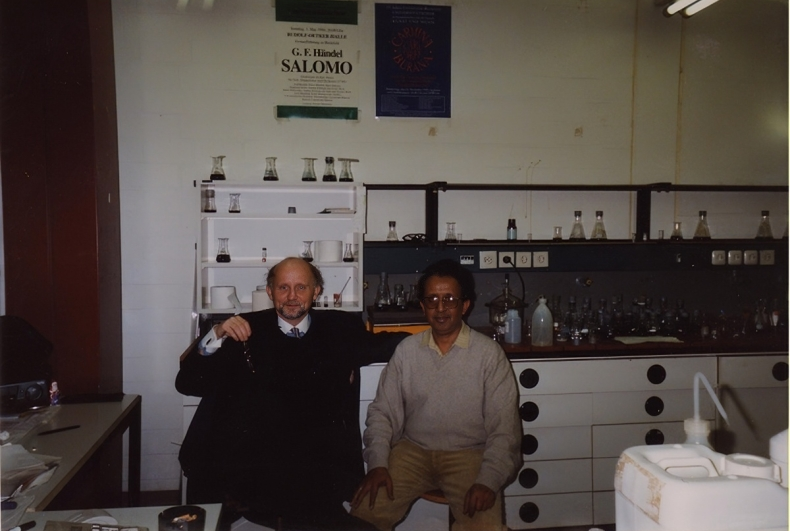
With Professor Achim Mueller on the discovery of giant spherical Keplerate
I have had a vision of “dabba,” a tiffin box. Like a Bombay dabbawalla box, it doesn’t recognize what’s inside – chapati, vegetables, chicken, dal anything. It’s just a box. We designed a “nano-box” made from ordinary coal or from burnt dry grasses that can swim the blood stream and cross the blood-brain barrier. You can put any combination of drugs inside. It doesn’t require any specific receptor. It goes in, delivers the drugs. And the box can be excreted within 7 days, thus completely removed from the body, it doesn’t stay there. These boxes are non-toxic and amphiphilic in nature. A beautiful nano carbon made box we’ve done, and proved its utility using with animal models. We’ve published and patented it. But the current pharmaceutical mindset is stuck on receptors for some reasons. They might take more time to realize the potential of what we’ve done. But I’d be happy when they do, because this is ultimate – a smart nano-box that can deliver any combination of drugs by closing and by opening as it.
In biomimicking, one of the biggest unsolved question? How nature fixes one molecule of molecular nitrogen to two ammonia molecules per second, simply, without needing a sophisticated rocket science laboratory? It happens in the open, on the roots of plants. Ammonia is crucial for DNA, protein, everything, that’s the first step. This is still a great challenge in biomimicking. If we develop a successful synthetic model, we could replace the energy-intensive Haber-Bosch process for ammonia synthesis, helping to address global hunger. Sustainability and energy efficiency are indeed big words, and this will cover in extent.
I say research should be curiosity-driven. Today’s work isn’t always about fundamental things. Some questions, probably nobody can answer, even Hawking’s could not do that. You talk about the Big Bang, but what was before it started? ” And, let there be light” in “Bible” implies something before. Where from that high-density mass came from? Who created it? That’s the same question as who is the absolute creator? Is it ‘He’ or not even ‘He’- one of the first questions in Rigveda raised thousands of years ago – still unanswered. That type of query you can think about. Another way is to think about what we need today, how research can make life better for so many people.
WAY TO GO
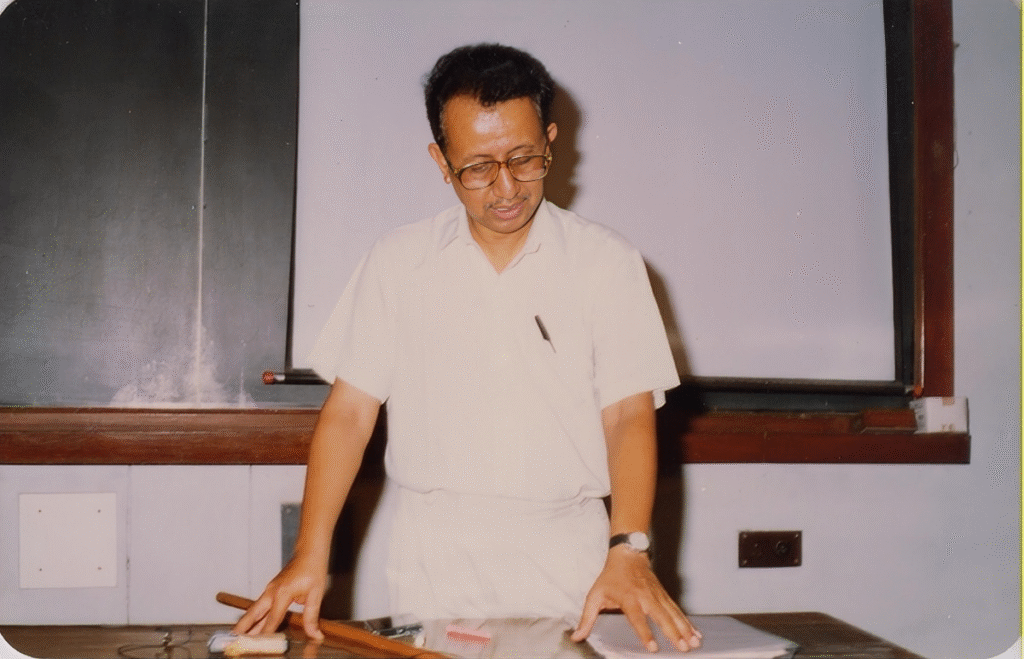
Addressing a mini-international symposium on bioinorganic chemistry at IIT Kanpur
However, there is still much to explore in the field of nature’s action chemistry. Comparing countries like the USA, Germany, Japan, they emphasize innovation. They don’t copy. Through innovative methods, they strive to make society happier with new discoveries that are accessible, achievable, and require minimal effort. Health is another aspect. Unfortunately, in India, we are still copying everything. That’s a problem. You see a paper, and the first sentence goes: ‘So-and-so has shown this, someone else has shown that, and now I am showing this too. From top to bottom, that’s the research they do. Seldom are we the first to show something. And if you are, affluent countries might not publish your paper because you’re claiming something new and big. That’s how Raman and Bose were denied their respective first attempts for publications.
Our political scientists and these ministries need to seriously think about how they are going to contribute. Is CSIR comparable to Max Planck Institute? Not at all. Shanti Swarup Bhatnagar wanted to have CSIR institutes that were the idea. But we defaulted. Most the garbage is pushed there. That is because a lot of channels filled with those political scientists. In those days, anyone returning from Cambridge or Oxford whether they had completed their research or not, often studying there on their parents’ fortune was still given recognition just for having been there. It is Cambridge lobby comprised of the good, the bad and the ugly. Mostly they hold good positions in the government. And used their thought like a blunt knife – it cannot make a sharp cut, like the Heisenberg uncertainty principle. They are not envious, but jealous. “Why should this person get this chance?” But it’s not about chance; it’s about stopping knowledge from reaching the community. They put a monkey wrench in the works, slow it down, and stop it. The middle persons are dangerous because they lack imagination. They don’t have the will to do good. There’s no dearth of good people in India to do good work, but they get demoralized.
I sometimes question if science and the fraternity are over the top complex? Then I realize -No, it’s not complex, we are deliberately making it so. Real scientists never go for coveted positions or big titles. Albert Einstein refused to be president of Israel! Real scientists stay away from all that. But political scientists, we have a lot of them. They want to be there and make everything cloudy so people get confused. But science is simple, like music. It describes everything lucidly. There’s no need for complexity, yet people complicate things for personal gain something that needs to be addressed.
But, setting this apart, you know, Guru mil jata hai per sachha chelan nahi, if one sees from other side. I don’t think I can give an English equivalent, it’s very difficult. Today, those who want to pursue academics and research struggle to find an environment that truly encourages open thinking and exploration of nature and the universe. They don’t find opportunities to interact with people who can inspire them. It should start very young. In this mobile age, people read so many things, but if it’s academic, they refuse. But even if out of a thousand, two or five are inspired, that’s enough. You have to give examples so they start searching, trying to find out. In India, people only talk about two or three scientists, Raman, and that’s it.
In Germany, in a farming place, an old person asked where I was from. I said India. We were conversing, and then I mentioned Albert Einstein. They both smiled and said, “You know, we have so many that we don’t remember”. That’s the answer I got. But here, a person unable to write his full name will keep asking about Raman. We are almost making Raman a Bhagwan, we worship now. So many Bhagwans in the making in India, that’s the problem. Young minds should be introduced to thought-provoking topics in school curricula things that encourage learning, questioning, and critical thinking. Someone can narrate, you can show examples. It’s not only Raman. So many other people have contributed such as Srinivasa Ramanujan, Sir Jagadish Chandra Bose and Satyendra Nath Bose. Not everyone can be Raman, nor can he be a universal example, but many follow their own paths and make an impact. In that sense, we’re proud and grateful to have started something to show Indian and international students that we have many great scientists doing remarkable work. To mark my journey, I have narrated my time in science with a hope.
Date 07.05.2025
Bioinorganic chemistry, Biomimicking, Biocatalyst, Nanoscience, Nature
Recreating Nature in the Lab: A Chemist’s Joy: My scientific journey began with a deep fascination for how nature constructs complex biomolecules. Recreating molecules like adenine from simple building blocks in the lab, using second-row transition metals like molybdenum as environmental catalysts, was not just an achievement, it was a profound moment of connection with nature’s own methods. The joy of designing and synthesizing molecules atom by atom and then watching them function like their natural counterparts remains the most fulfilling reward of my research life.
Revolutionizing Drug Delivery with a Simple Idea: While the pharmaceutical world was focused on receptor-based drug delivery, I envisioned something radically different: a universal “Nano-box” that could carry any drug across the blood-brain barrier, regardless of its type. Inspired by the simplicity of the Bombay dabbawala’s lunchbox, we created a non-toxic, biodegradable carbon-based nano-carrier that delivers drugs safely and is completely excreted within days. This innovation, tested and patented, holds transformative potential, even if current mindsets have yet to fully embrace it.
Challenging a Century-old Scientific Puzzle: A persistent question haunted photosynthesis research for a century: does carbon dioxide truly bind to the magnesium centre in chlorophyll? By replicating this chemistry with synthetic porphyrins and verifying it through rigorous 13C NMR studies on natural chlorophyll, we offered concrete proof. It was a tribute to Willstätter’s unfulfilled scientific quest. I felt that we not only solved a puzzle but also honoured scientific legacy through modern tools and creative thinking.
Redefining Reaction Mechanisms with Biomimetic Kinetics: Traditional chemical mechanisms like the Marcus outer-sphere and Taube inner-sphere fail to explain the unique behaviour of our synthetic atom-transfer reactions. Through my work, I demonstrated that these reactions follow enzyme-like Michaelis-Menten kinetics, emphasizing the formation of enzyme-substrate-like complexes, in the ground state. Despite resistance from reviewers, I hold firm that this understanding opens new paths in catalysis, bridging chemistry and biology more closely than ever before.
Developing Sustainable Catalysis for Industry and Environment: Inspired by the potential of biomimicry, I developed synthetic enzyme models capable of catalysing industrially relevant reactions, like converting acetylene in crude ethylene to useful compounds. These catalysts, mimicking natural enzymes like acetylene hydratase, can detoxify harmful substances and produce valuable products at low cost and with minimal environmental impact. This work represents my vision of chemistry serving both industry and sustainability, creating value while reducing harm.
A Future Dream: Mimicking Nitrogen Fixation: One of the greatest unsolved challenges I continue to pursue is the biomimicry of nitrogen fixation. Nature converts nitrogen to ammonia at ambient conditions in the root nodules of plants something the energy-intensive Haber-Bosch process still struggles to do efficiently. Cracking this code could revolutionize agriculture and global food security. I remain hopeful that a synthetic model will one day achieve this, proving that even the simplest biological feats can inspire world-changing innovation.
Inspiring Minds, Questioning Systems, and Hoping for Change: Beyond my lab work, I have always believed that scientific creativity needs freedom and encouragement qualities often lacking in our current system. While countries like the US, Germany, and Japan push innovation, we in India are still often caught in a cycle of imitation. I strive to break this cycle by mentoring young researchers to think independently, search passionately, and question boldly. Even if just a few choose the path of genuine curiosity and discovery, that would be a legacy worth leaving behind.
Pushing Boundaries Despite Resistance and Rejection: Throughout my career, I’ve often faced resistance when presenting new concepts especially when they challenge established theories or come from outside the dominant academic circles. But each rejection only strengthened my resolve. From atom-transfer reaction models to alternative pathways in catalysis, I have remained committed to scientific truth over popularity. Progress in science demands courage to persist, even when others are unwilling to listen.
Understanding Mosquito Chemistry to Reveal Nature’s Ingenuity: Curiosity led me to explore how mosquitoes use nitric oxide (NO) to feed unnoticed. By modelling the nitrophorin protein, I uncovered how it binds NO in acidic conditions and releases it at blood pH, enhancing blood flow for easier feeding. Then, it binds histamine to suppress irritation until the mosquito is gone. This molecular sleight of hand is a masterclass in biological efficiency, and studying it deepened my appreciation for nature’s elegant problem-solving mechanisms.
Calling for a National Scientific Renaissance: I’ve observed how deeply systemic issues, including favouritism and intellectual complacency, have slowed our scientific progress. Institutions once envisioned as beacons of innovation have drifted from their missions. Yet I remain hopeful. I believe India has brilliant minds and boundless potential. If we shift our focus from imitation to innovation, provide opportunities for original thinkers, and celebrate risk-taking over safe conformity, we can usher in a renaissance in Indian science one where we are the first to discover, not just follow.
